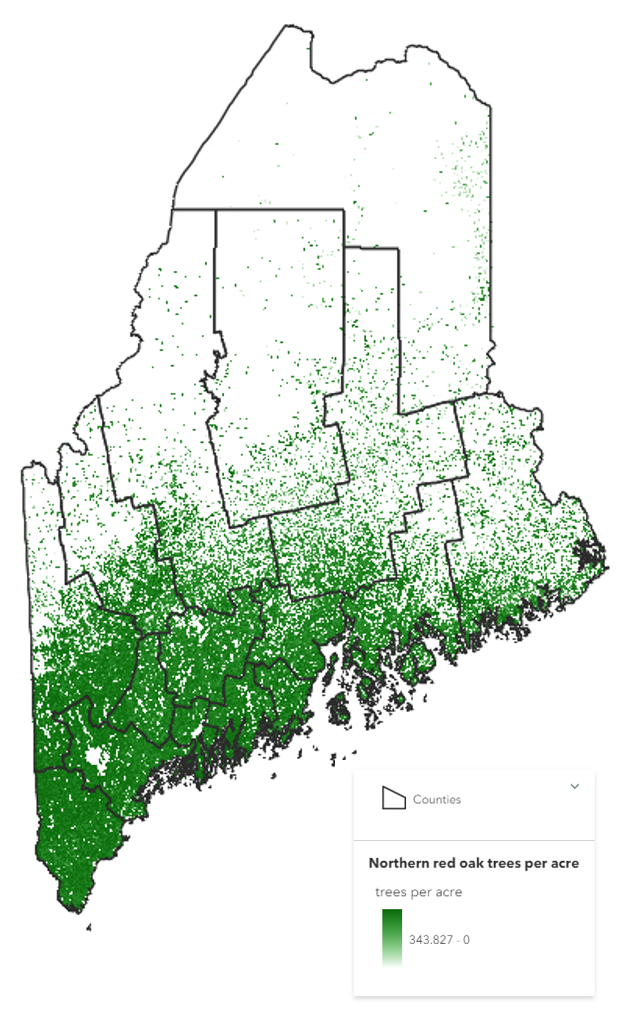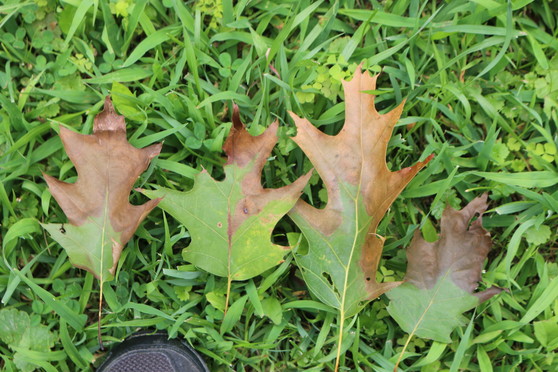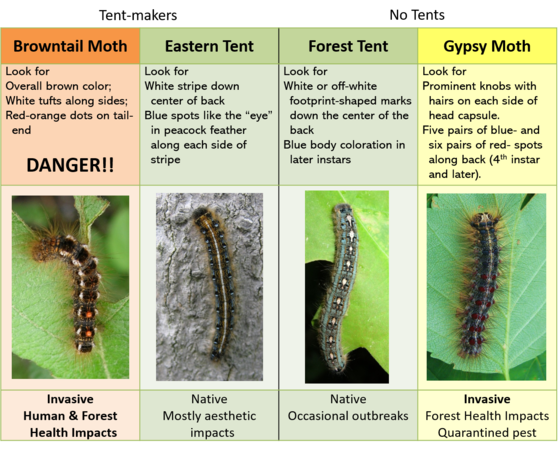
May 15 – 22, 2021
Maine celebrates Arbor Week and National Invasive Species Awareness Week.
Today, the Maine Department of Agriculture, Conservation and Forestry is celebrating the mighty oak tree, a valuable resource to many beneficial organisms, and unfortunately a preferred host to some invasive ones.
Oaks (Quercus spp.) are a common forest and ornamental tree in Maine. They provide food for a diversity of wildlife—from insects to birds to mice to bears. The wood is used in many applications, it is hard, strong and relatively dense. There are eight oak species native to Maine, it is a genus whose numbers are projected to increase with climate change. The most abundant is northern red oak (Quercus rubra), with almost 190 million stems over one inch diameter estimated by the 2018 state forest inventory. In addition to native oaks, there are many species used in plantings around homes, cities and towns. In these settings they can reach massive sizes and provide shade and add visual appeal.
 Maine has almost 190 million northern red oak stems in its forest, this map shows the number of stems per acre derived from 2018 forest inventory data (USDA FS, FIA)
Maine DACF is asking people to be on the lookout for signs of an invasive threat to our oak trees. Oak wilt disease is a caused by a fungus that infects water-conducting tissues, first leading to color changes and early leaf drop. Red oak group trees infected with the oak wilt fungus can die rapidly, often the same year they are infected. White oak group trees experience less severe symptoms and slower decline. They can serve as a reservoir of the disease. Be on the lookout for foliage discoloration and significant early leaf drop in red oak group trees and report symptoms to the Maine Forest Service at foresthealth@maine.gov.
 Look for and report foliage discoloration and early leaf drop in oak. Above leaves exhibit symptoms typical of oak wilt disease.
Oaks are also host to Maine’s most notorious invasive caterpillar, the browntail moth. Browntail moth will feed on a wide variety of hardwood trees and shrubs, but oaks are among their favorites. Learn to recognize the browntail moth, and avoid places with high populations of the caterpillars. Exposure to their toxic hairs can result in a severe skin rash and respiratory difficulties. Caterpillars are currently wandering from their hosts, so risk of encounters are high. Review Maine CDC’s factsheet on browntail moth for more information on how to reduce exposures.
 There are a lot of harmless hairy caterpillars out there. Learn to recognize and avoid browntail moth.
For those planning to manage browntail moth with insecticides, the best window for management is closing for 2021. In most years, treatments should be completed before the end of May to limit buildup of toxic caterpillar hairs and host foliage loss. We recommend working with a licensed pesticide applicator for this approach.
- May 19, 12-1pm or 7-8pm, Gardening the Beech: Balancing Two Options
- May 19, 2–3pm, The Regulatory Process for Classical Weed Biological Control
- May 20, 12-1pm, Diseases of Landscape Trees
- May 20, 2–3pm, Aquatic Plant Management Priorities
- May 21, 2–3pm, A Comparison of State Noxious Weed Lists and The Western Weed Action Plan
Check out Maine Arbor Week events presented by the Maine Audobon.
Spread awareness and celebrate the state's trees. Take your National Invasive Species Awareness Week commitment beyond this week. Tell your friends, family, neighbors and others about invasive species! It's a big state, and we can't get the word out to everyone without your help. Encourage them to get involved with National Invasive Species Awareness Week in their own way. Here are some resources to help get started:
|